How to drain water from a frame pool?

Swimming in the pool is almost the perfect way to deal with the summer heat in the country or in a country house. In the water you can cool off in the sun or rinse after a bath. But at the stage of design and construction of a prefabricated reservoir, it is imperative to take into account such an important aspect as water drainage. This will allow you subsequently not to rack your brains over how to do it correctly without risking yourself and the environment.

Goals
First, consider for which the water is usually removed from the reservoir:
- if an animal or bird got into the pool and died there;
- chemical components harmful to humans have entered the water;
- the water has an unpleasant odor or color;
- the onset of cold weather and preparation for storage during the period when the pool is not used.
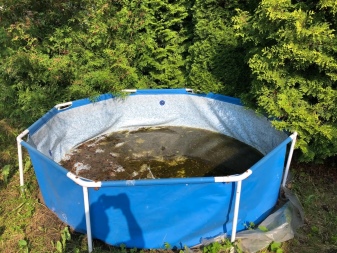
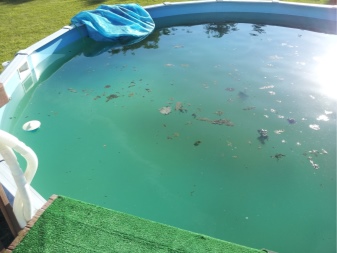
If the above reasons are not observed, then many of the owners of these structures may ask a quite natural question: "Why should I do this?" As usual, in our society there are two diametrically opposed opinions on this matter. One part of the users says that it is imperative to drain the water from the pool. The other half thinks differently. There is also a third group - lovers of compromise: to merge, but not completely. Let's consider the arguments of each of them.
The adherents of the first group believe that in any case, when the pool is used less often, it is better to remove the water with the onset of autumn. Why then waste extra effort on keeping the water clean, removing fallen leaves, etc.? It is much easier to drain the water, remove the debris from the bowl and cover everything with an awning.
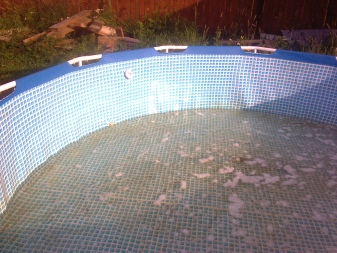

Followers of the opposite point of view believe that when the ground freezes around the frame pool, groundwater freezes and begins to squeeze the bowl of the reservoir, after which it can deform or even collapse.
And the water frozen inside the tank will resist the pressure and keep it intact.
Still others insist: we must leave some of the water and not suffer with the problem of complete emptying of the pool. All these opinions have a right to exist, and the choice "to merge or not to merge" very often depends on the materialsfrom which the frame tank is made, the structures of the earth around it and the personal preferences of the owners.
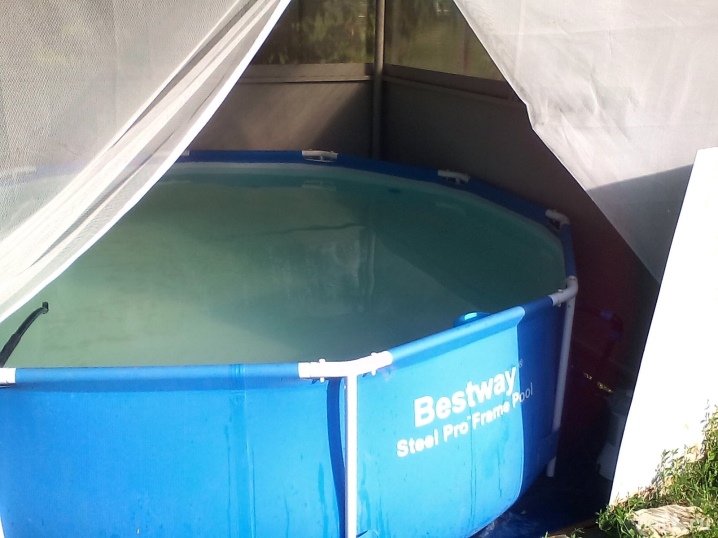
Plum types
There are several options for pumping water out of a reservoir, we will consider them in more detail.
To the ground
The easiest way is to use water for various household needs. This means watering the beds, washing the paths, or simply pouring them onto the ground. However, there is one "but": it is possible to water the garden and vegetable garden if the water has not been chlorinated.
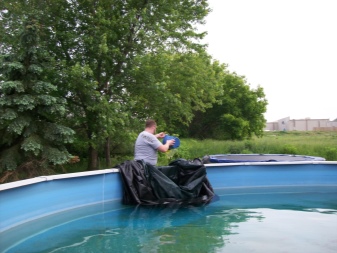
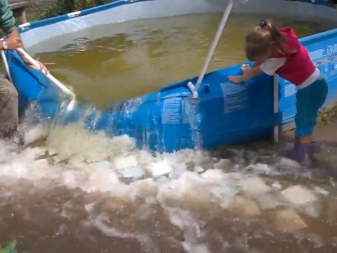
If things are reversed, all plants may die.
Another circumstance that complicates the use of this method - this is the need for additional hoses if the tank is located at a considerable distance from the cultivated areas. When planning to use water for irrigation, it is worth using the "chemistry" that will not harm green spaces.
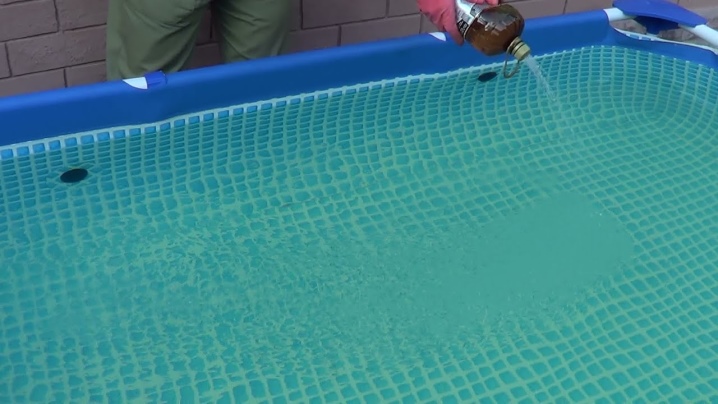
Downpour
If there is a storm sewer near your site, then you are very lucky. You have the opportunity to pump water out of your home reservoir painlessly without causing a flood in your yard. Rainstorms are designed for large volumes of precipitation. All you need to drain is a hose and a pump unit that pumps water from the pool into the ditch.
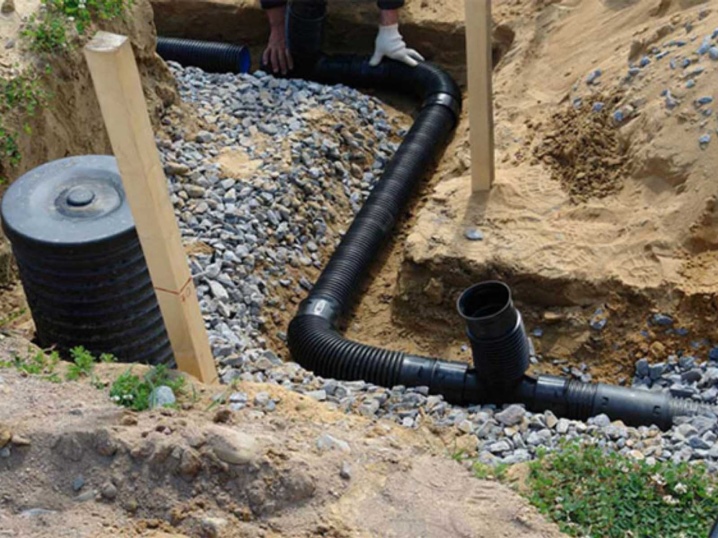
To the cesspool
When draining water into a septic tank, there is a real risk of overflow if the volume of the pool is greater than the volume of the cesspool. Experts object to the use of this method and advise to have a special drainage pit.
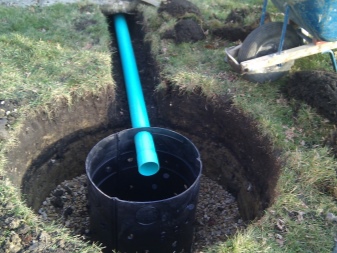
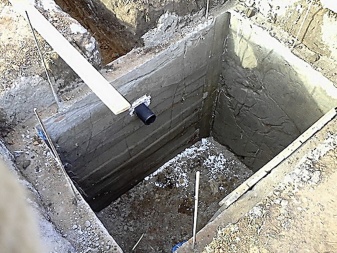
When erecting it, you need to make sure that the level of the pit is below the tank. The bottom should be covered with rubble to facilitate water seepage into the soil.
This method can only be recommended for owners of small pools.
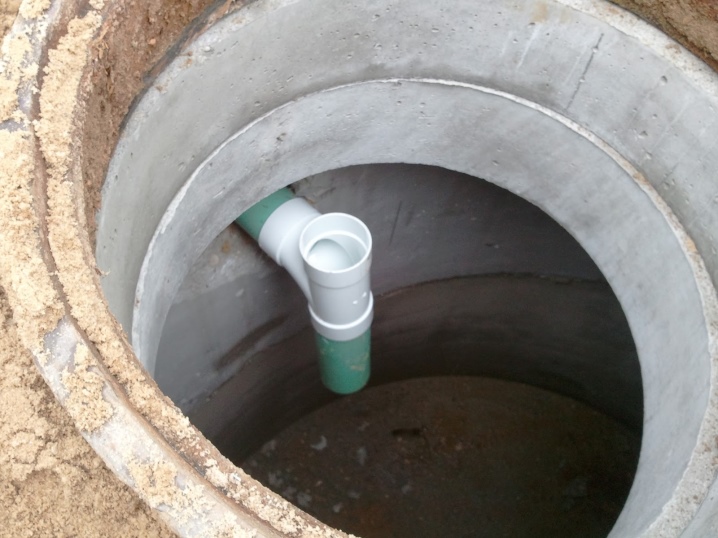
Down the drain
This method, without exaggeration, is the most correct, reliable and convenient. But you need to initially think about where to install the pool, provide a drain valve at the bottom of the tank and bury pipes in the ground to drain water... When laying pipes, a slope must be made so that the water drains quickly and does not stagnate. It is also advisable to make as few turns as possible. The only caveat is local sewage laws, it is very important to familiarize yourself with them in order to know all the nuances.

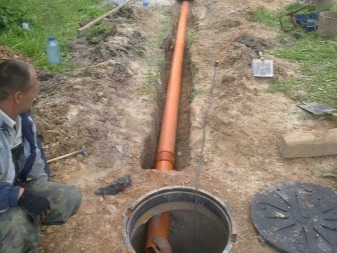
Into the pond
Water can be moved into a body of water if it is somewhere nearby, preferably at a distance of up to 25 meters. If it is located at a greater distance, then this method is no longer economically feasible. Again, there are limitations to the application of this method. The most important thing is the norms of the law on nature protection, they must not be violated in any case. Only an irresponsible person can drain polluted water into a natural reservoir.

Into the receiver
If it is not possible to use the above methods, then you will have to make your own sewer - a receiver for water. It is built very simply: a hole is dug, the walls are lined with refractory bricks.
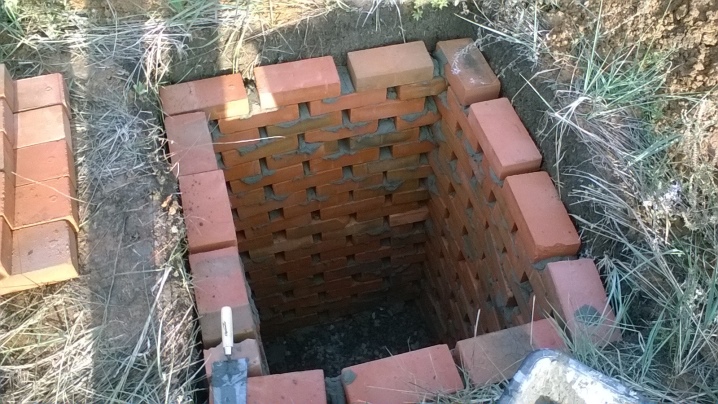
Such a receiver has increased reliability and will not collapse upon contact with water or natural stone.
It is necessary to provide holes in the walls to facilitate the flow of water into the soil and a cover with a hole for the hose. The disadvantage of this method is that if the receiver has insufficient volume, then the water will have to be drained in parts.

Pump types
Since the frame pool is not stationary and is dismantled at the end of the swimming season, there is no point in spending substantial money on equipment for pumping water. You can buy an inexpensive but powerful pump. When choosing such a unit, you should pay attention to the following criteria:
- size and weight;
- equipment;
- electrical network parameters;
- power (throughput);
- warranty obligations.

In order to quickly pump out water from a frame pool, two types of pumps are mainly used.
- Submersible (bottom). It is very easy to use this apparatus. It is placed in a tank and the engine is turned on, after which water from the pool rises through a hose and is directed to the drain. These pumps are also used for other purposes - drainage of wells, pumping out groundwater from basements, etc. The advantages of a bottom pump are low cost, versatility in application, low weight and compactness of the product. The disadvantages include low performance.
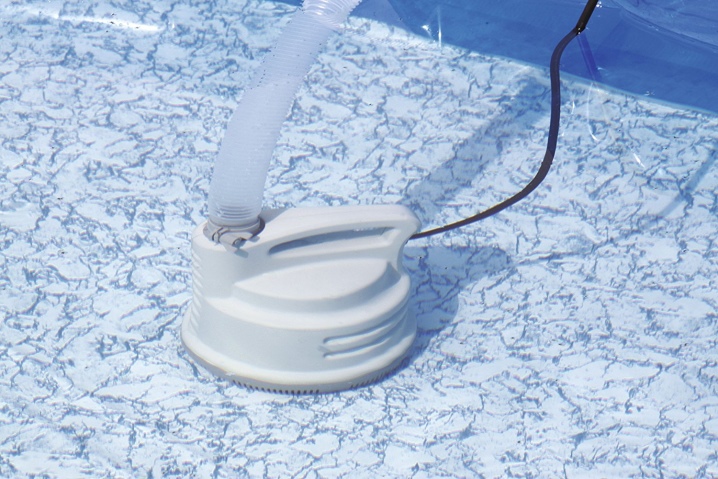
- Stationary (surface). This type is used for draining frame pools in the event that for some reason it is impossible to use a mobile type of pumps. It is mounted next to the tank, a hose is lowered to pump water into the pool, then the unit is started. Advantages - high power and ease of use. The disadvantages are the higher price and the need for installation next to the tank above the pool level.
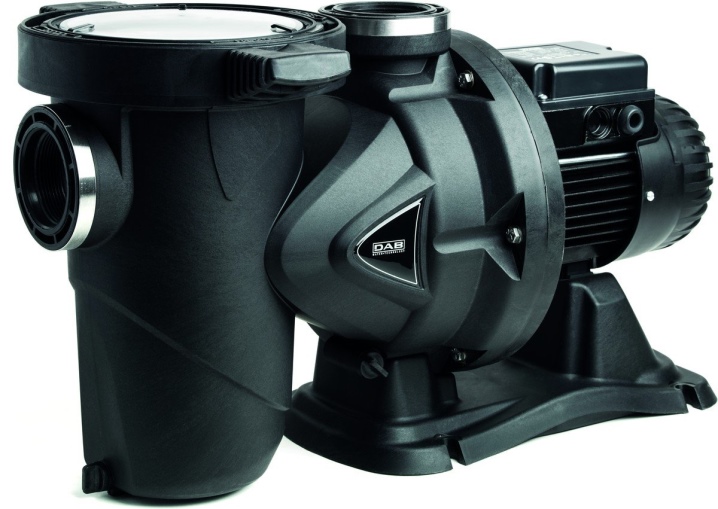
Stages of work
There are two ways to properly drain the water from the frame pool: manual and mechanical.
When using the first method, the algorithm of actions is as follows:
- choose a place where moisture will drain;
- connect the garden hose and make sure that the drain plug is properly installed on the inside of the tank;
- we release the valve from the protective cover and connect the drain hose to a special adapter (sold in hardware stores);
- the second end of the hose is directed to the previously selected place for draining the water;
- connect the adapter to the drain;
- after connecting the adapter, the internal drain plug will open, and the water will begin to drain;
- at the end of the work on emptying the reservoir, you need to disconnect the hose and replace the plug and plug.
If this option is not suitable, then you can use another. Everything is simple here: we lower the submersible pump or hose at the stationary unit into the pool bowl.
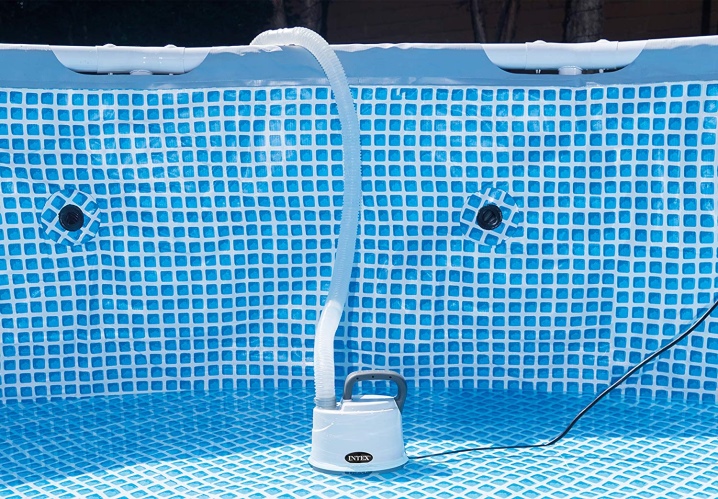
We start the device, the stream is directed to the receiver. Turn off the device after draining and put things in order. When using the first and second methods, it will not be possible to completely remove the remaining moisture from the bottom. To completely drain the pool, you will have to use some highly absorbent material and collect the remaining moisture. After completion of work, it is recommended to clean the structure of dirt and prepare it for storage.
How to drain the water from the frame pool, see below.



































































The comment was sent successfully.